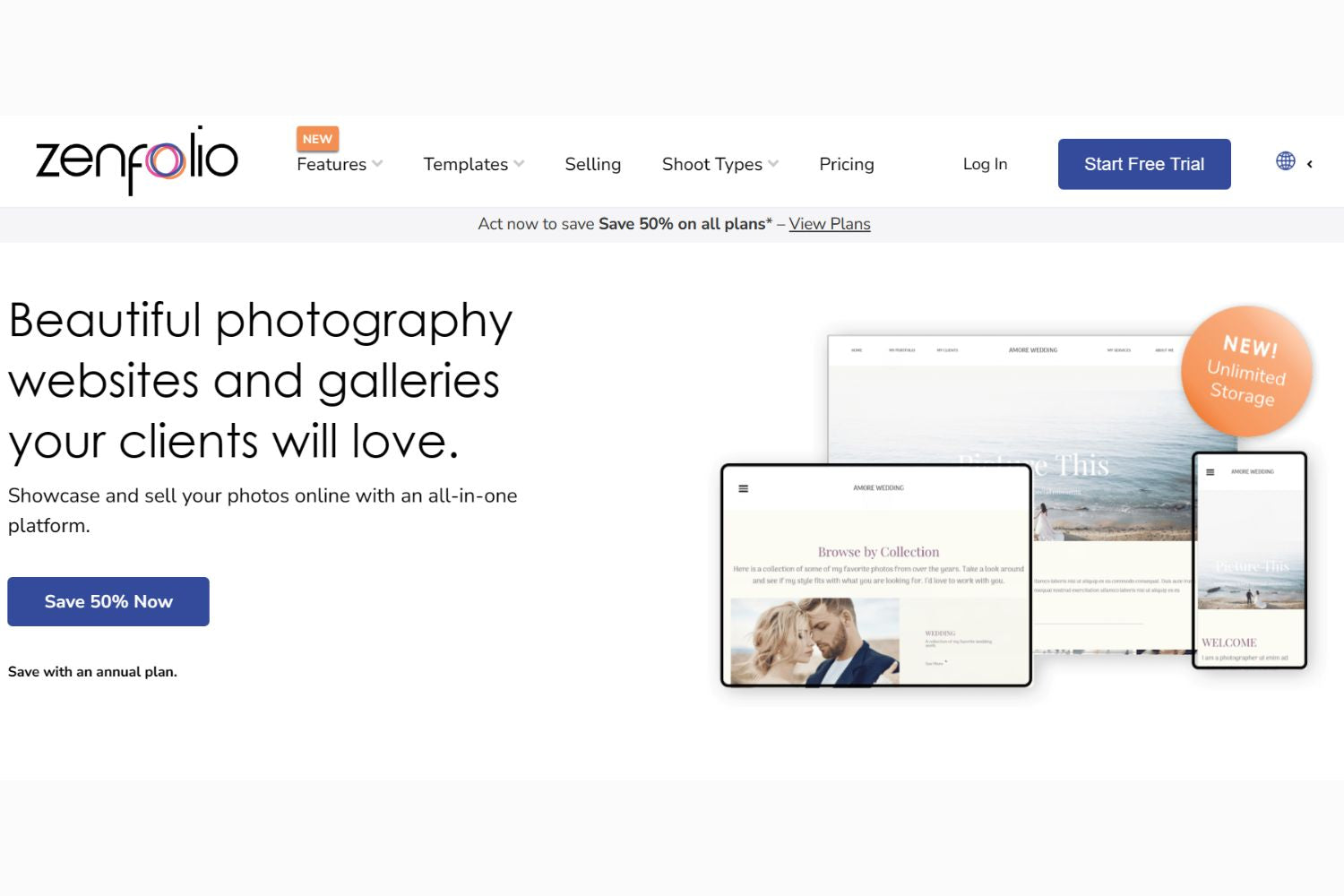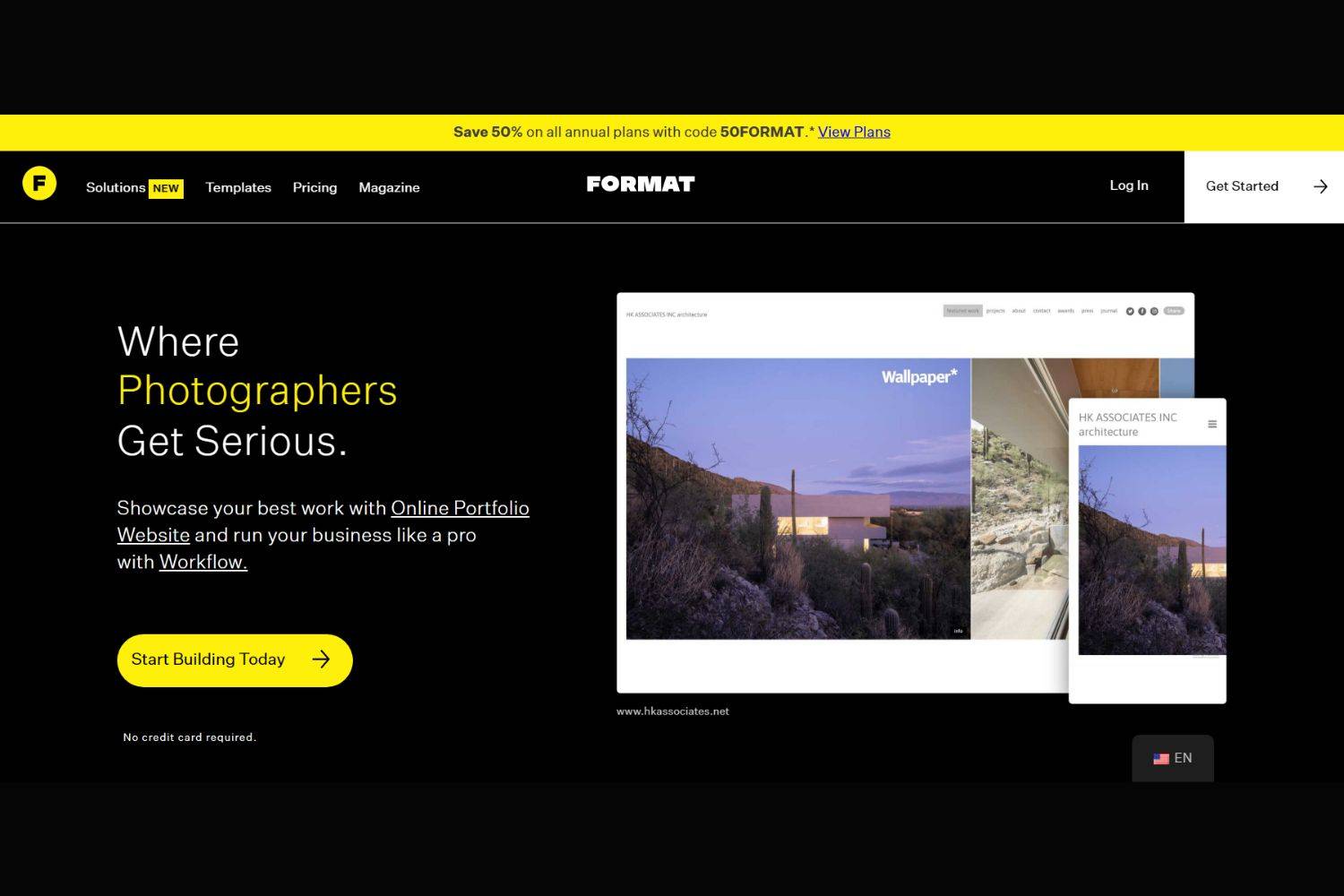Photography portfolio websites serve as the virtual gateway to photographers' artistry, enabling them to showcase their skills, creativity, and unique perspectives to a global audience. With many options available, selecting the right platform for your portfolio is crucial.
In this guide, we will discuss what a photography portfolio is, how to build a good one and present a curated list of 10+ best photography portfolio websites with their pros and cons.
What is photography portfolio
A photography portfolio is a curated collection showcasing a photographer's top-notch work, creativity, and unique style. It enables clients and employers to assess their capabilities and suitability for specific requirements.
How to Build a Good Photography Portfolio
-
Creation

Photo by Kostyazar on shutterstock
Build an engaging and visually captivating photography portfolio website using user-friendly platforms like Squarespace and Wix. These platforms offer intuitive interfaces and customizable templates to showcase your style and highlight your best work.
-
Selection
Theme and Topic
Choose a theme or topic for your portfolio that aligns with your niche or expertise. This allows you to showcase your specialization and artistic vision.
Target Goals and Audience
Define your target goals and identify your intended audience. Also, tailor your portfolio content and presentation to attract and engage the right clients or employers.
Market Positioning
Consider the competitive landscape and position yourself uniquely within the market. Do this by emphasizing your strengths, unique selling points, and areas of expertise.
Typical Work
Select and include your best and most representative work demonstrating your skills, creativity, and style. This provides a comprehensive overview of your capabilities.

Photo by Dariush M on shutterstock
-
Edition
Enhance your photographs through careful editing, focusing on composition, lighting, color correction, and post-processing techniques. This helps to ensure a consistent and professional look throughout your portfolio.
-
Pricing Page & Contact Form
Clearly outline your services, packages, and rates on a dedicated pricing page or section of your website. Incorporate a contact form to facilitate easy communication with potential clients, including essential contact information.
-
Reviews & Testimonials
Display positive reviews and testimonials from satisfied clients to build trust and credibility. Highlight their feedback and ratings to showcase your work's value and quality, increasing potential clients' confidence.
-
Favorable Last Impression
End your portfolio website with a memorable and positive closing statement or summary. Consider incorporating a strong call-to-action, encouraging visitors to take the desired next steps, such as contacting you for inquiries or booking your services.
Tips for Creating a Photography Portfolio Website
Outside Opinions

Photo by Kaspars Grinvalds on shutterstock
Seek feedback from trusted individuals or fellow photographers to gain valuable outside perspectives on your portfolio. Their insights can help you identify areas for improvement and ensure that your portfolio resonates with a broader audience.
Photo Sequence
Pay attention to the order in which you present your photographs. Create a visually cohesive and engaging flow by arranging images in a thoughtful sequence that showcases your versatility and range as a photographer.
Great Impressions
Make a strong first impression with a visually captivating homepage or landing page. Use a striking image, an attention-grabbing headline, and a clear call-to-action to instantly engage visitors and entice them to explore your portfolio further.
Less Is More
Avoid cluttering your portfolio with too many images or excessive text. Embrace minimalism and showcase a carefully curated selection of your best work, allowing each photograph to shine and leave a lasting impact on the viewer.
Diversify the Pieces
Showcase a diverse range of photographs highlighting your versatility and ability to work in different genres or styles. Including various subjects, compositions, and moods in your portfolio demonstrates your adaptability and broadens your appeal to potential clients.
Upload
Regularly update your portfolio with new and fresh content to showcase your growth as a photographer. Continuously add your latest and best work to keep your portfolio dynamic and compelling, encouraging visitors to return and see your latest creations.
10+ Best Photography Portfolio Websites
1. SmugMug

Image credit: smugmug.com
User-friendly platform for creating stunning photography portfolios.
Pros
- Customizable templates
- Integrated e-commerce functionality
- Unlimited storage space.
- Reliable and secure backup options
Cons
- A paid subscription is required for advanced customization
2. Adobe Portfolio

Image credit:adobe portfo.com
Provides seamless integration with Creative Cloud tools
Pros
- Integration with Adobe Creative Cloud
- Simple and intuitive interface
- Access to Adobe Fonts and Behance
Cons
- Limited flexibility compared to other platforms
3. Behance

Image credit: behance.com
A leading platform for showcasing creative work.
Pros
- Free
- Large creative community and exposure
- Opportunity to collaborate on projects
Cons
- Lacks NFT support
4. Weebly

Image credit: weebly.com
A user-friendly website builder with responsive templates for showcasing photography portfolios.
Pros
- E-commerce features for selling prints and products
- Mobile-responsive design
- Intuitive drag-and-drop interface
Cons
- Has issues with image editing
5. PhotoShelter

Image credit: photoshelter.com
Robust platform for photographers with e-commerce capabilities.
Pros
- Extensive e-commerce features
- Customizable galleries and portfolio layouts
- Image watermarking and copyright protection
- SEO-friendly tools for better visibility
Cons
- Higher pricing plans for advanced features
- Steeper learning curve for beginners
6. Zenfolio

Image credit: zenfolio.com
All-in-one solution for photographers with e-commerce capabilities.
Pros
- Integrated e-commerce functionality
- Customizable portfolio website
- Client proofing and selling features
Cons
- Limited template options
- Extra cost for additional features
7. Squarespace

Image credit: squarespace.com
Popular website builder known for its sleek and modern designs.
Pros
- Supports blog pages
- Fairly priced
- Stylish and professional templates
Cons
- No built-in client-proofing feature
8. Wix

Image credit: wix.com
Versatile website builder with visually appealing templates.
Pros
- Drag-and-drop interface for easy customization
- Wide variety of templates
- Free plan available
Cons
- Templates that cannot be easily swapped.
9. Format

Image credit: format.com
Portfolio-focused platform with minimalist and clean designs.
Pros
- Modern and minimalist templates
- High-quality image display
- Built-in blogging features
Cons
- Limited e-commerce options
- Lack of advanced customization
10. Carbonmade

Image credit: carbonmade.com
Simple and elegant portfolio website builder.
Pros
- Clean and visually appealing templates
- Easy uploading and organizing of images
- Social media integration
Cons
- Similar appearance among completed portfolios
11. WordPress

Image credit: wordpress.com
Versatile content management system for building photography portfolios.
Pros
- Highly customizable with numerous themes and plugins
- Strong SEO capabilities
- Large community and support
Cons
- Slow
- SEO Ranking is poor
Conclusion
Creating a photography portfolio website is essential to succeed in showcasing your photography skills and attracting potential clients. Having known some of the best photography portfolio websites, you can now decide on the right platform for your needs.
If you like this article, please share it! Be sure to join our FB Group: https://www.facebook.com/groups/Katebackdrops/ to share your ideas! You can also receive free articles, updates as well as discounts information from https://www.katebackdrop.com/ and our FB Group.

 Custom Printed Fabric Backdrops
Custom Printed Fabric Backdrops Custom Rubber Floor Mats
Custom Rubber Floor Mats Custom Collapsible Backdrops(double-sided)
Custom Collapsible Backdrops(double-sided) Custom Hand Painted Canvas Backdrops
Custom Hand Painted Canvas Backdrops Custom Vinyl Backdrops
Custom Vinyl Backdrops Arch
Arch






